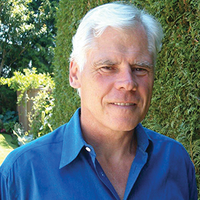By / Ron Coleman

In part 1 of this article we reviewed a variety of options around benefits programs. While these programs are designed to attract and retain employees they are usually offered to all employees, with an opt-in opportunity. If they choose not to take advantage of the program, they get no benefit.
Because they are targeted across the board, they are not performance motivating.
There are numerous methods of rewarding and acknowledging performance, individually, by division and by the company overall.
Short-term performance is often rewarded by paying bonuses or commissions. Long-term rewards would be along the line of offering stocks or stock options.
Often the president of the company goes to each or specific employee to say “thanks, we had a great year and here is your bonus”. The employee is dutifully thankful but wonders what exactly he/she did to get that bonus. Did others get the same or more or less? Why didn’t I get more? Will I get this next year? I believe that is the worst type of bonus a company can hand out. There is no accountability and no real communication about how the bonus was earned. This can become very demoralizing in subsequent years when the bonuses are reduced or eliminated or when the president changes his or her mind or when new leadership takes over.
In developing a rewards program make sure it meets these three criteria.
- Useful
- Objective
- Feasible
Giving out those “thank-you” bonuses fails all three criteria.
For a reward to be useful it must be benchmarked against specific outcomes. For it to be objective it must stand up to scrutiny by all parties involved and to be feasible it must be easy to measure, monitor and manage.
A successful rewards program works for the entire company and not one division or one group of employees.
In this article we will focus on service work, time and materials and retrofit projects. All of which usually come under one division. In part 3 we will look at construction.
A commission program is the easiest to implement but is normally restricted to sales people. It should be based on a variety of factors not just sales targets. Other areas to consider are profit margins, types of customers, sizes of order, repeat business, new customers, customer satisfaction, collection of accounts receivable, customer relationship management (CRM) and social media. The objective should not be to pit sales people against each other. To be really useful the program should encourage the sales people to support each other. Make sure it meets the three criteria for measuring a solution. A successful sales division meeting ongoing and long-term sales and profits targets.
Service divisions can often use a fairly simple process which would reward all the people involved in service.
Service techs should be rewarded based on their billable time and penalized for unapplied time. The company should set a benchmark for what percent of hours a tech needs to bill out based on his hours paid. Some companies aim for 100%, others for 90%, many have no target. If you go less than 100% make sure you build the extra cost of the unapplied time into your charge-out rates.
If, for example, your target is 90% billable then institute a bonus program that would reward techs for reaching their target and an increase in reward for exceeding the target. Doing this on a quarterly basis to encourage consistency. Every hour under your target is costing you one hour of billable time and you are paying for your tech and truck. Any call back hours are deducted against the target of billable hours, thus reducing any rewards the tech might get from reaching their target.
| Target for billable hours | 90% | ||
| Period | Qtr. to June 30 | ||
| Hours paid | 450 | ||
| Billing target | 405 | 90% | |
| Actual hours billed | 410 | ||
| Hours over target | 5 | $10.00 | $50.00 |
| Hours billed on target | 405 | $0.50 | $202.50 |
| Total reward | $252.50 |
If the actual billed is close to target there might be some reward
If you are using flat rate pricing, then pay your techs based on the time allowed in the flat rate program.
Service techs should also be rewarded for generating sales and for getting requests for proposals. Sales might include signing up customers to planned maintenance programs or for supplying and installing programmable thermostats or changing out flappers in toilets when they are on-site.
The other members of the service division would be rewarded based on the division’s profitability. A budget would be set at the beginning of the year. Meeting the budget means expectations were achieved and that is what everyone got paid for. A performance reward would be based on exceeding profitability in the division. It would likely be allocated based on salaries of everyone except the techs (they got their rewards for meeting their billing targets against paid hours). By basing the reward on salaries, it ensures that the more senior people get the bigger portion and as they are the ones that have the most influence within the division this seems fair. Because it is based on the division it takes away competition among the people in the division and creates a stronger team environment. Within the division there will be peer pressure and mentoring to help the weaker members of the team to be successful.
By treating the service division as one area for a reward program the company can implement better marketing for planned maintenance and for upselling such as “when we are on site, we could check your hot water tank or service your fireplace”.
Because everyone is going to benefit from the improvement on profitability there will be more motivation to carry out more sales processes and generate more profits.
In addition to service work Techs also undertakes small projects, usually retrofit, either on a time and materials basis or on a fixed price basis.
The T&M work follows the same pattern as the hourly service work, but the fixed price projects need to be treated differently.
A very important part of building trust with your team is transparency. So, if you allow 8 hours for a job and the techs complete it in six hours, they should get paid for 8 hours otherwise why would they finish it in six hours? You made your profit and overhead for 8-hours work, and you can get them working on another project and that improves your profitability. You recover overhead and profit twice. On some jobs the hours will overrun so I recommend a banking system.* Bank the over and under hours for a period, say three months, and pay out the difference. Any deficiency work goes into the bank as a negative.
It is critical that you review with all your team a performance program before implementing it. You need to have their buy-in and avoid having to make changes to it. More about that in part 3 of this article where we will also cover off performance rewards for construction work and simple and cheap performance reward programs for all employees. Stay tuned! ▪
- In Quebec, a banking system is not permitted. Please check with your individual provinces to ensure this system is within jurisdictional allowances.



